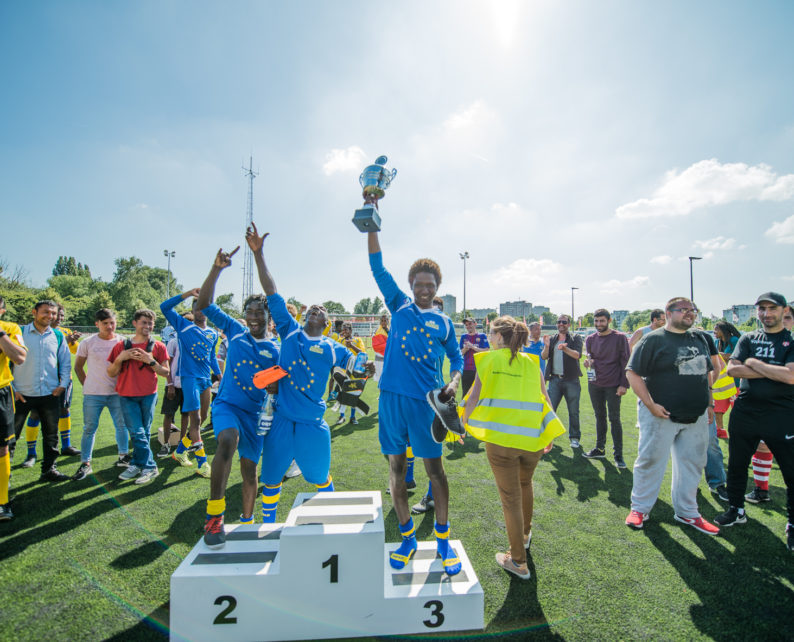Football – a shared sense of belonging
This is the title of the ethnographic Report on the Role of Football in the Lives of Refugees and Asylum-Seekers, written by the British cultural sociologist Chris Stone following a three-year study (2010-2013) in Sheffield on behalf of the NGO Football Unites, Racism Divides (FURD). In his key findings, he encapsulated the benefits of football in five major concepts (echoing, in a more elaborate academic vocabulary, the points listed above). These can be succinctly summarised as follows:
- Routine – football provides a consistency in lives, a connection between the past and the present. Its sheer banality offers a sense of regularity and normality.
- Catharsis – evacuation of stress and relief from the pressure of managing lives that have become complicated; positive emotions allow to develop positive thinking and anticipation.
- Sociality – football provides an alternative channel of interaction, in which identity is not reduced to ethnicity or political/legal status, as well as moments of strong in-group cohesion.
- Empowerment – regardless of the level of performance, football is an activity in which it is possible to exert some control in lives that are otherwise completely powerless.
- Plurality – football stages difference and sameness, repetitiveness and unpredictability, challenge and comfort, frustration and success; it’s a space where things appear possible. [1]
For Chris Stone, the “sense of belonging” that football can generate should be seen as “the interconnection between cultural, communal and personal aspects of life that make people feel able to express themselves freely and see themselves as an equal” (page 75).
[1] Chris Stone, Football – A shared sense of belonging, Sheffield: 2014. See also Chris Stone, “Utopian community football? Sport, hope, and belongingness in the lives of refugees and asylum-seekers”, Leisure Studies, 2018, vol. 37, no 2, p. 171-183.





